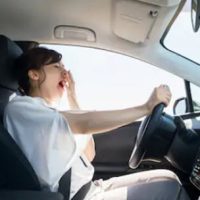The Five Kinds of Driving Impairment

One of the five kinds of driver impairment causes most of the vehicle collisions in Washington. Speeding, turning illegally, and other kinds of aggressive driving cause most of the rest. Juries often award considerable damages in these cases. Arguably, impaired tortfeasors (negligent drivers) knowingly choose to put other people at risk. As a result, the settlement value of a driver impairment crash is usually high.
The settlement value is the figure that a Seattle car accident lawyer first proposes during settlement negotiations. These negotiations usually involve some give and take. A good lawyer knows when to give and when to take. Negotiators must know when to compromise and when to stand firm. Otherwise, the victim must settle for less, or the victim’s settlement is unduly delayed.
Distraction
Cell phones aren’t the leading cause of driver distraction. But they are the only kind of distraction that involve:
- Manual distraction (hand off the wheel),
- Cognitive distraction (mind off driving), and
- Visual distraction (eyes off the road).
Hands-free devices might be even more dangerous. Although they’re not manually distracting, they give drivers a false sense of security, so they take unnecessary risks.
Washington has a hands-free law. If drivers violate a safety law, like RCW 46.61.672, and that violation substantially causes injury, the tortfeasor (negligent driver) could be liable for damages as a matter of law. Using a hands-free device while driving doesn’t violate a law, but it does violate the duty of reasonable care. If a breach of care causes injury, the tortfeasor is responsible for damages.
Alcohol
Similarly, an alcohol-related crash could involve the negligence per se rule or the ordinary negligence doctrine.
If first responders cite the tortfeasor for DUI or a related offense, the negligence per se rule applies, even if the tortfeasor “beats” the DUI in criminal court.
There’s a difference between intoxication and impairment. Many drivers are dangerously impaired but not legally intoxicated. Evidence of impairment includes physical symptoms, such as:
- Bloodshot eyes,
- Slurred speech,
- Unsteady balance,
- Odor of alcohol, and
- Slow reactions.
This evidence could also establish third-party liability in alcohol-related wrecks. Commercial providers cannot sell alcohol to impaired customers.
Fatigue
Alcohol and drowsiness affect the body and brain in roughly the same way. They both adversely affect motor skills and judgment ability. Furthermore, just like only time cures alcohol impairment, only sleep cures fatigue. Drinking coffee and other shortcuts don’t address the underlying effects of fatigue.
Normally, drowsy driving isn’t against the law. Therefore, a Seattle personal injury lawyer must normally use the ordinary negligence doctrine to obtain compensation in these cases.
Drugs
The five kinds of impairment often overlap. The connection between drugs and fatigue is a good example. Many people, especially truck drivers, take amphetamines to counteract the effects of fatigue. These drugs impair judgment even more than fatigue. Additionally, when these drugs wear off, the users crash hard and fast.
Marijuana is the most common drugged driving substance. The effects of alcohol add up over time. But the first puff of a joint hits most people like a ton of bricks.
The DUI law, and therefore the negligence per se rule, applies in some drugged driving cases. Generally, however, attorneys use circumstantial evidence to prove ordinary negligence. In addition to the aforementioned physical symptoms, evidence in drugged driving wrecks includes erratic driving before the crash and physical evidence, like a roach clip, in the vehicle.
Medical Condition
Some drivers have epilepsy or another serious medical condition that could cause a sudden loss of consciousness behind the wheel. Other drivers have the flu or another moderate illness. Symptoms like coughing and watery eyes significantly reduce driving ability. In both cases, the ordinary negligence doctrine usually applies. Drivers must be at their best, physically and otherwise, when they get behind the wheel.
Rely on a Diligent King County Lawyer
Impaired drivers often cause serious injuries. For a free consultation with an experienced personal injury lawyer in Seattle, contact the Emerald Law Group. Attorneys can connect victims with therapists, even if they have no money or insurance.
Source:
medlineplus.gov/impaireddriving.html
